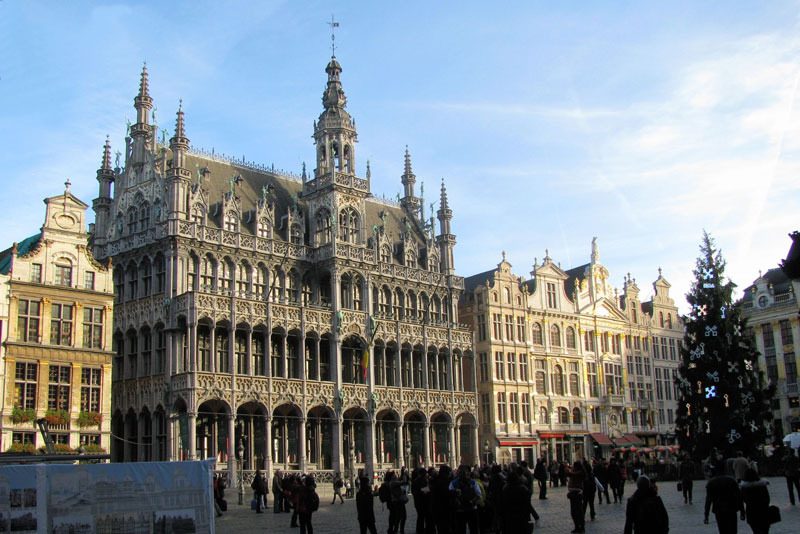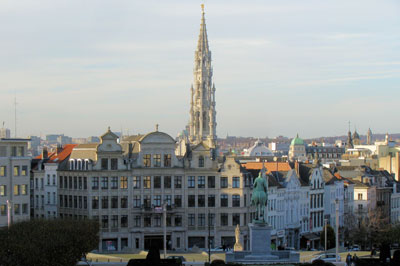A guide to Brussels’ Metro
This item appears on page 12 of the March 2015 issue.
As an experienced traveler, I was taken aback by several, albeit minor, challenges when using Brussels’ Metro (subway) during a November 2014 visit. My wife and I were expecting a metro system as simple to use as that in Paris, but that was not the case.
In my line of work, using OE (operational experience) is an important tool with which to communicate lessons learned in order to avoid future mistakes and problems. Consider this article OE for travelers using the Brussels Metro.
To be fair, the Brussels Metro is very good. It’s certainly popular; carriages were full or nearly full at all hours. Trains were frequent, stations and trains were clean, and real-time train status was available on the platforms.
The Metro’s operator, Société des Transports Intercommunaux de Bruxelles (STIB), provides a helpful English-language version of its website (www.stib-mivb.be/index.htm?l=en) and has a free phone app (“STIB-mobile”).
While stations and routes aren’t as comprehensive as those in London or Paris, the shared portion of Lines 1 and 5 serves most of the sights that are of interest to visitors.
We got off to a rocky start. Coming from Aachen by train, and after changing trains in Brussels’ Gare du Nord, we arrived at Gare Centrale and wandered with our luggage for several minutes in search of the Metro platforms and for a place to buy tickets.
We saw no Metro signage until we moved up two levels from the train platforms. There we finally discovered a long, wide hallway that led to the subway. More importantly, we found a KIOSK (a Metro ticket office). The English-speaking gentleman working in the KIOSK was extremely patient and helpful.
We learned from him that there was a catch with my plan to buy my wife and myself a pair of 10-journey MOBIB tickets for €12.5 (near $14) each. Those tickets come with a one-time €5 charge (apparently not refundable). At his suggestion, for €14 we instead purchased 10-journey JUMP tickets, which have no additional charges.
Although MOBIB tickets are cheaper than JUMP tickets per ride, the extra one-time charge of €5 for each MOBIB ticket made the JUMP tickets a better deal for us. (Some MOBIB tickets can be reloaded and supposedly last up to five years, but, since we were short-term visitors, we wouldn’t be reusing them.)
MOBIB tickets are smart cards (like London’s Oyster Card) that work with proximity readers, allowing the cards to be quickly swiped or scanned. The older JUMP tickets are magnetic-stripe cards that must be inserted into yellow validation machines or card readers. (If you’re persistent enough, you’ll eventually find this information on the STIB website.)
There are a number of other ticket options, including one-, 2- and 3-day unlimited-ride tickets; all are documented on STIB’s website. At the time of our visit, single-ride tickets cost €2 (MOBIB) and €2.10 (JUMP). In addition to purchasing tickets at KIOSKs, they can be purchased from BOOTIK commercial agencies and from GO machines.
Equipped with our tickets, we walked several minutes to the subway platforms. Once there, we couldn’t find a validation machine. Taking a chance, we boarded the next train and soon arrived at our destination station, Sainte-
Catherine. We chose one of the two exits at random and exited the station without incident.
Upon arrival at our hotel, I inquired about validation. We were advised that some older stations (which included both of the stations we used) have few or no barriers that require validation. At the Ste-Catherine station, the exit we did NOT use required a validated ticket.
We eventually discovered that there was a validation machine at Gare Centrale, but we unwittingly walked by it well before we arrived at the platforms (and before we were even looking for it). In short, we had been very lucky. Some European cities charge at least €50 to anyone traveling with an unvalidated ticket.
Over the next few days we discovered that most stations do have barriers requiring the use of fare cards for both entry and exit. Many entrances had multiple proximity-type card readers for the newer cards and only a single older-type mechanical reader for those of us using the magnetic stripe cards.
Inadequate signage was my biggest complaint about the Brussels Metro. In addition to there being limited signage at Gare Centrale, the street-level entrances could have used more conspicuous signs.
A larger concern was with older stations (like Ste-Catherine) that had direction-specific entrances but, at street level, no signs indicating which direction the trains were heading (e.g., north or south) from the platform reached by that entrance. One night at dinner we met a pair of Americans who had mistakenly used the wrong entrance at just such a station.
In addition, we had a problem selecting our desired exits from stations. Many stations had area maps to assist with choosing the best exit to one’s destination. Often, however, there wasn’t sufficient signage for the exits to allow us to determine which exit correlated with the exit we selected on the map.
Our final challenge was with the directional labeling on the subway trains, themselves.
Typically, each train displayed the name of the station at the terminus of its route. We observed that trains on routes that passed through Gare du Nord and Gare du Midi (Brussels’ other two train stations) sometimes displayed the names of those stations instead of the name of their line’s last stop. This could be confusing, especially in stations serving multiple lines.
Overall, Brussels’ Metro system has a lot going for it, but it would be great if STIB invested in a little more signage. We always got to our desired destinations, though sometimes with little unexpected adventures thrown in.
We can’t complain, however. We ended up getting 11 rides from each of our 10-journey tickets!
STEPHEN O. ADDISON, Jr.
Charlotte, NC


